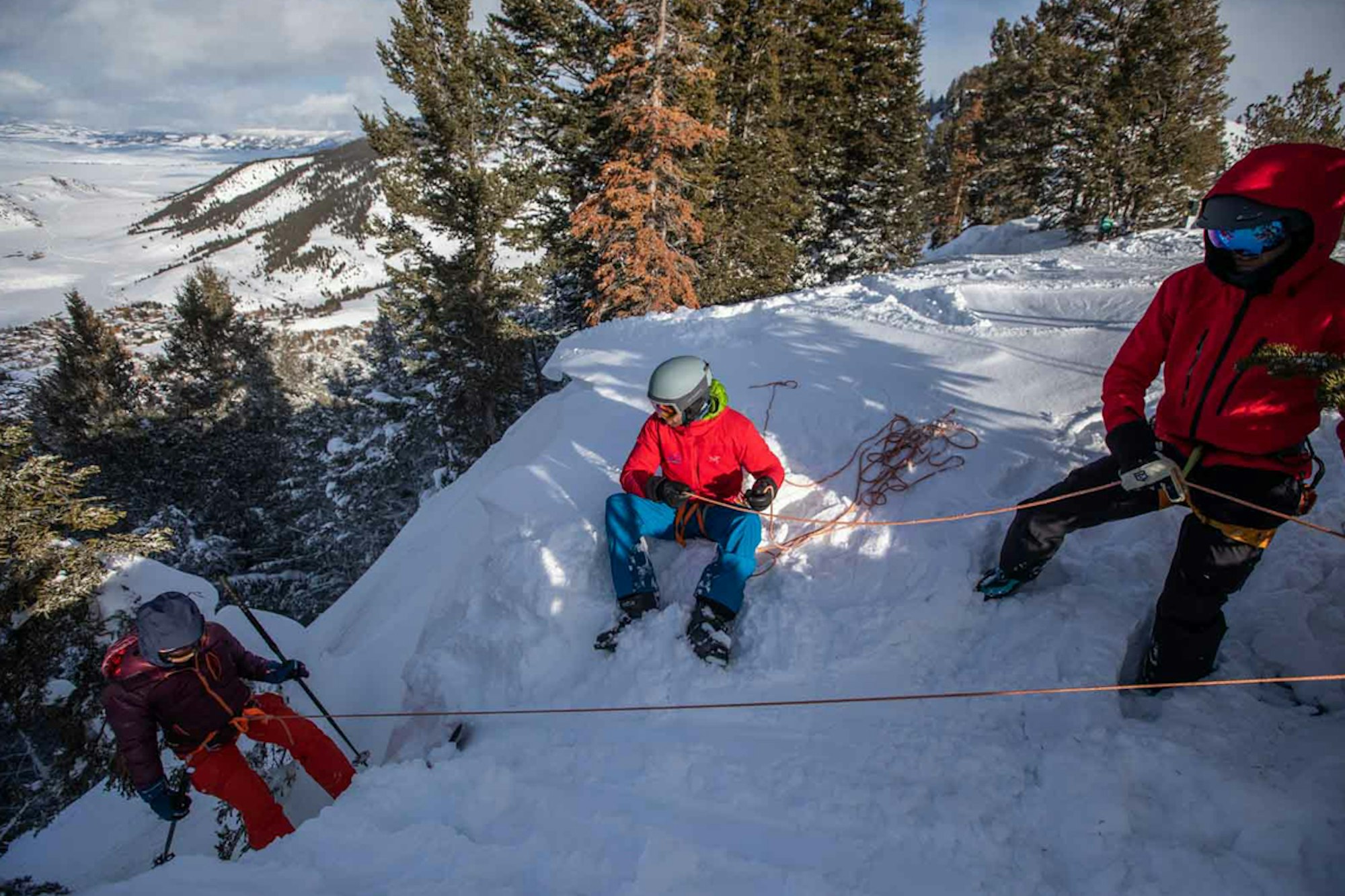Last week, FREESKIER attended the third-annual Arc’teryx Backcountry Academy in Jackson, Wyoming. For four days, skiers and snowboarders—participants, athletes and guides—convened in the state’s most famous ski town to celebrate Jackson’s seemingly infinite backcountry terrain and the community that thrives within it. With clinics ranging from beginner introduction courses to advanced ski-touring and mountaineering classes, the Arc’teryx Academy focuses on progression and meeting its consumers wherever they’re at in their backcountry experience.
Progression in uncontrolled terrain is an intricate balancing act between pushing past your comfort zone without going over the edge and putting yourself—and your partners—at unnecessary risk. We’ve watched our favorite professional athletes like Michelle Parker and Eric “Hoji” Hjorleifson walk this proverbial tightrope beautifully in countless ski projects and films throughout the years, but Parker and Hoji will be the first to admit they didn’t just magically learn how to approach the backcountry on their own. Mentors, oftentimes older and certainly always wiser, are who Parker and Hoji credit for their individual success and progression in the backcountry. FREESKIER’s Assistant Editor, Erin Spong, caught up with the two Arc’teryx athletes to talk all things backcountry skiing, including mentorship and the significant role Arc’teryx plays in providing those mentorship opportunities through its Academy.
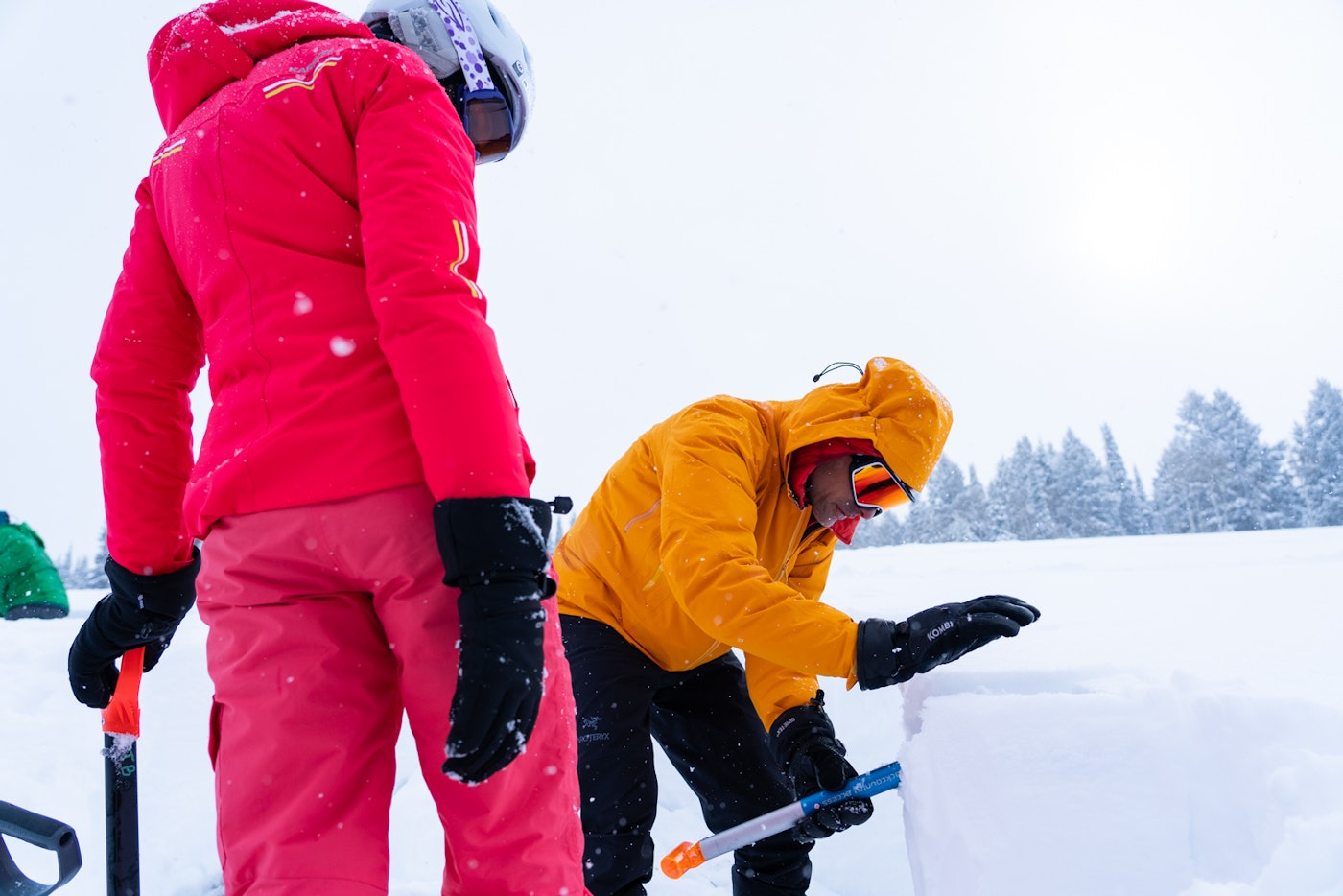
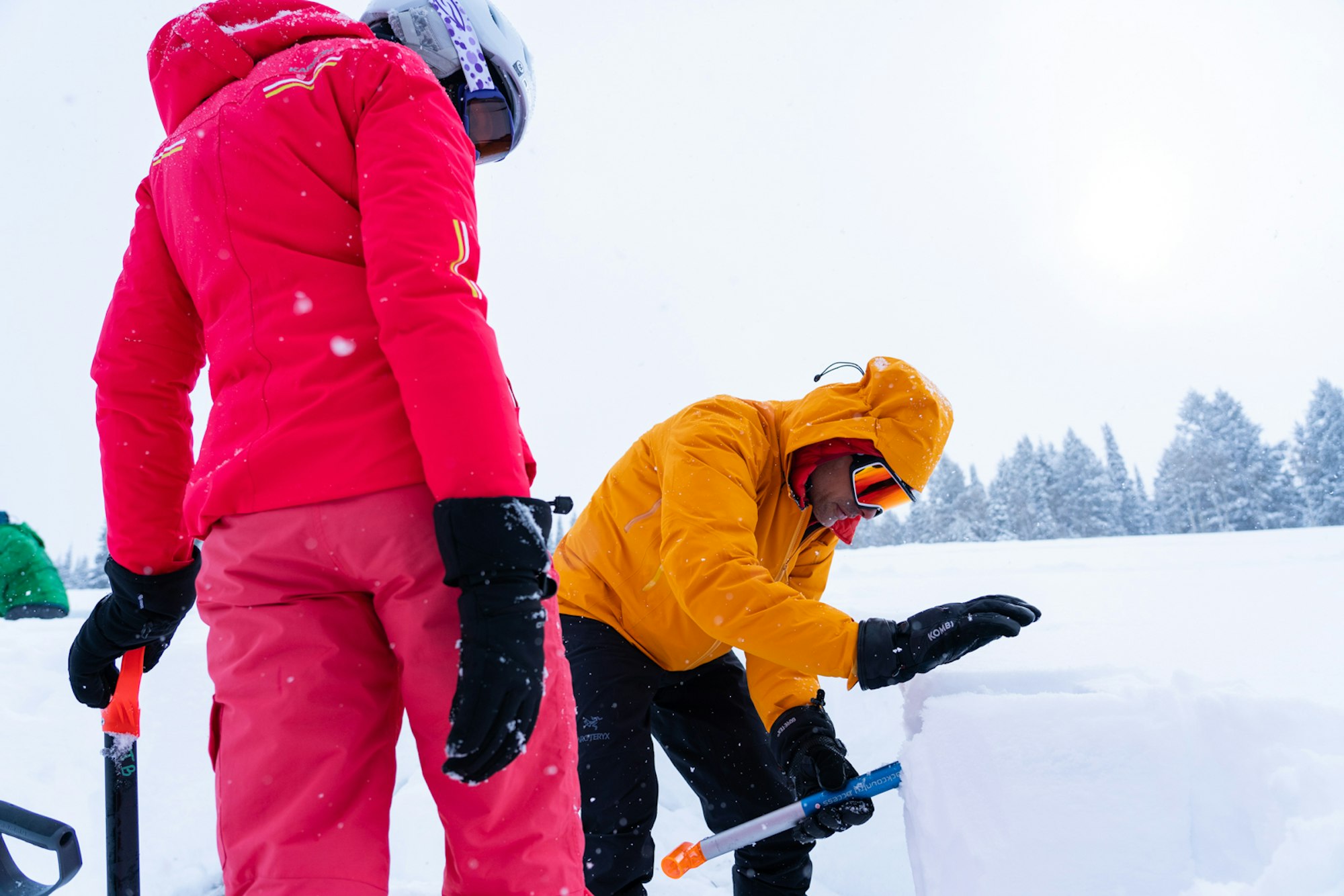
Participants assess the snowpack in a “Companion Rescue” clinic. PHOTO: Will McKay
I’ve noticed throughout the Academy, with all of the different clinics, it all comes back to mentorship—going out and learning with people who are more experienced than you. Why is it important to have that mentorship in the mountains?
Michelle: I think people often ask, ‘how did you progress, how did you learn?’ and for me, it’s always been about having really strong mentors. Finding those mentors, for me, has been through my community and just getting out there and meeting people who I kind of speak the same language with in the mountains, who respect what I have to say and who are also really beautiful teachers. So many of those mentors are honestly twice my age and they’re amazing because they know [specific ranges] super well and have years of experience and have survived for a reason. So for me, having good mentors in my life, whether that be just for lifestyle or just for skiing in the mountains or all the above, is so important.
Hoji: Backcountry skiing and snowboarding is a very condition-dependent sport and the mountains and snow really dictate what you should be doing or what you can do on those days that you’re out. In that way, it’s really an experience-based skillset. You need to go and have experience in the mountains and the best way to do that is to obviously go with people who are either professionally trained and that’s their job to have a lot of experience or you might have mentors and ski partners who bring you in a little bit. In my case, that’s exactly how it was. I had a lot of ski friends who were 10 years older than me who started introducing me and taking me into the backcountry for skiing. An event like this is the perfect opportunity to have a lot of people with a lot of skill sets to go skiing with—guides, athletes, different people in the industry—and I think it’s a very good way to learn, no matter what level you’re at.
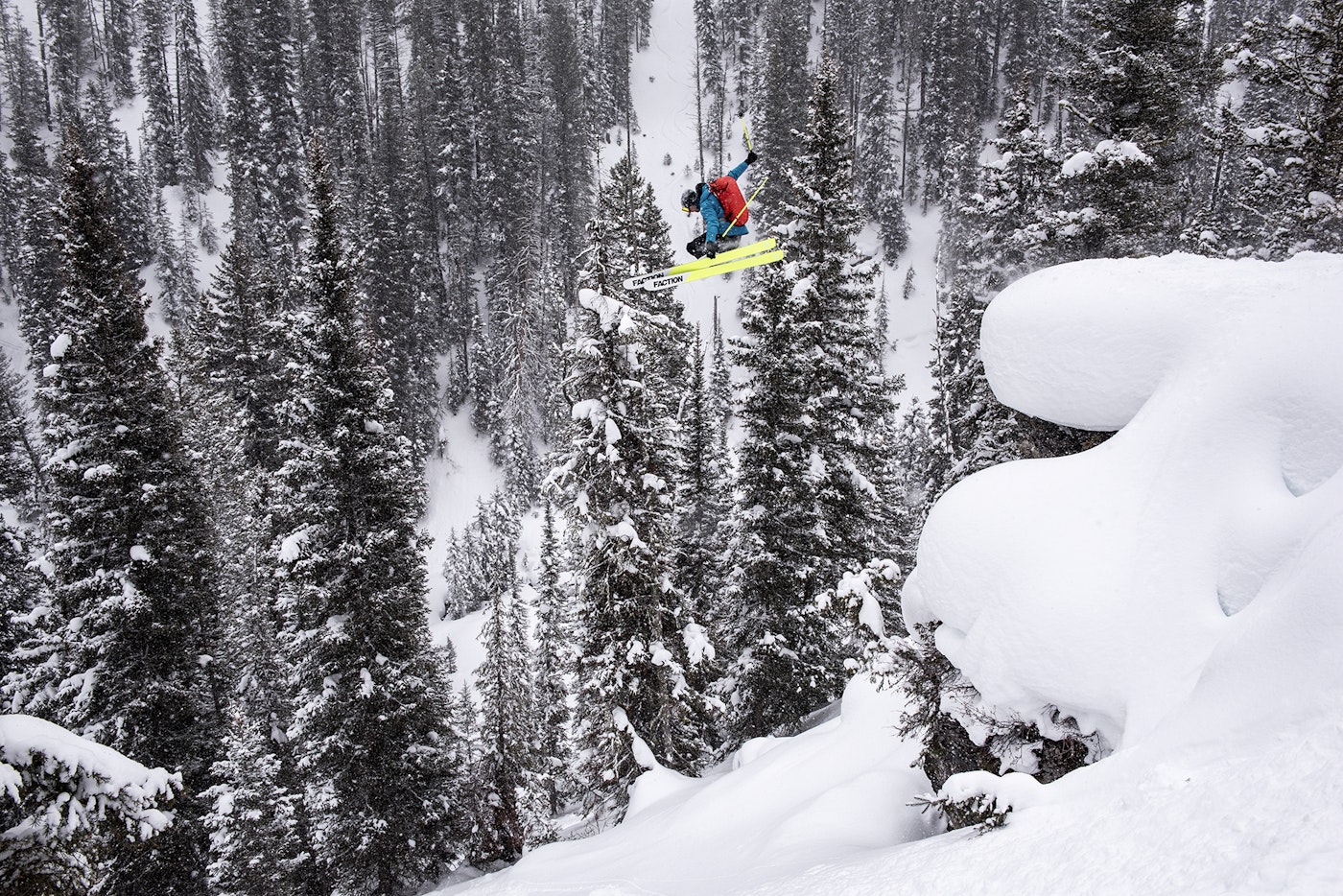
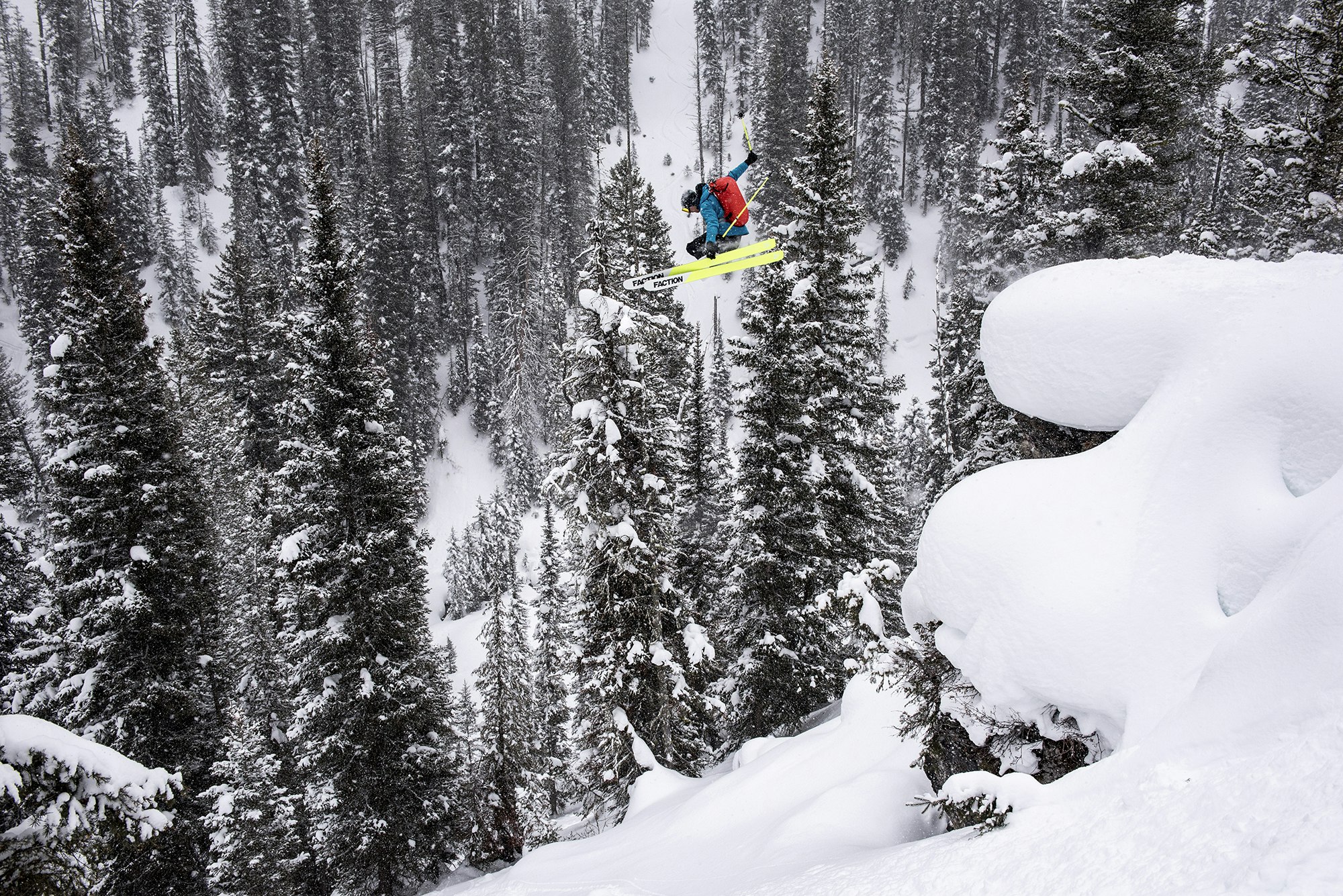
Clear for landing! PHOTO: Guy Fattal
There are so many aspects to the Arc’teryx Academy—the skiing, the aprés events, the music—what is your favorite part?
Michelle: I think my favorite part about the Academy is that it feels like such a community vibe. We’re involving the Jackson community, we’re opening up these mountains through the Exum Guides service to a lot of people who maybe have never been in the park and showing them the outdoors. For me, I think that’s the most precious part about the Academy itself. Having the live music, slideshows, all these presenters. Last night we watched Bill Briggs have an interview on stage and Katie Burrell did her comedy skit and everyone here can partake in that and that’s really special and cool. You also meet new people, there’s a lot of camaraderie, so the community aspect is definitely my favorite part.
Hoji: Well, the skiing [laughs]. The Tetons are very nice for ski touring. There are a lot of excellent possibilities—tree skiing, storm skiing, huge alpine couloir systems and faces. So, to come down here and to be a part of it and get to ski with the Exum Guides, meet a ton of awesome people, make new friends and connections with people from the area and going skiing with them is so cool. They get to show you their playground and where they like to ski and it would be, for me, just coming here on my own, I would have an awesome time but I probably wouldn’t go to the same spots or have the same experience. And then on top of that, it’s just a really cool event. All of the activities after the skiing—the music, the entertainment, the interviews on stage, the film projects, the photographer showdown. It’s just a really complete package. The hardest thing is having enough energy to make it all the way through [laughs]. These are some long days but we wake up early in the morning because we know we’re going to be skiing powder.
“The Father of Extreme Skiing,” Bill Briggs came to talk about his first descent of the Grand Teton in 1971 with Greg Hill leading the interview. How was that experience for you?
Hoji: I was super excited, I kind of came in uninformed…I just kind of like to show up and figure it all out, so that was a surprise. It was cool to have that interaction with Greg and learn a little bit more.
Michelle: That was extra special. That was the kind of person, even just listening to him speak last night, was mentorship in itself. These are the type of people that I view as heroes, who have done stuff well ahead of their time with equipment that wasn’t up to date, like what we’re using now, and pioneered what we’re doing right now. It was so beautiful to listen to him talk and such a pleasure and such a treat.
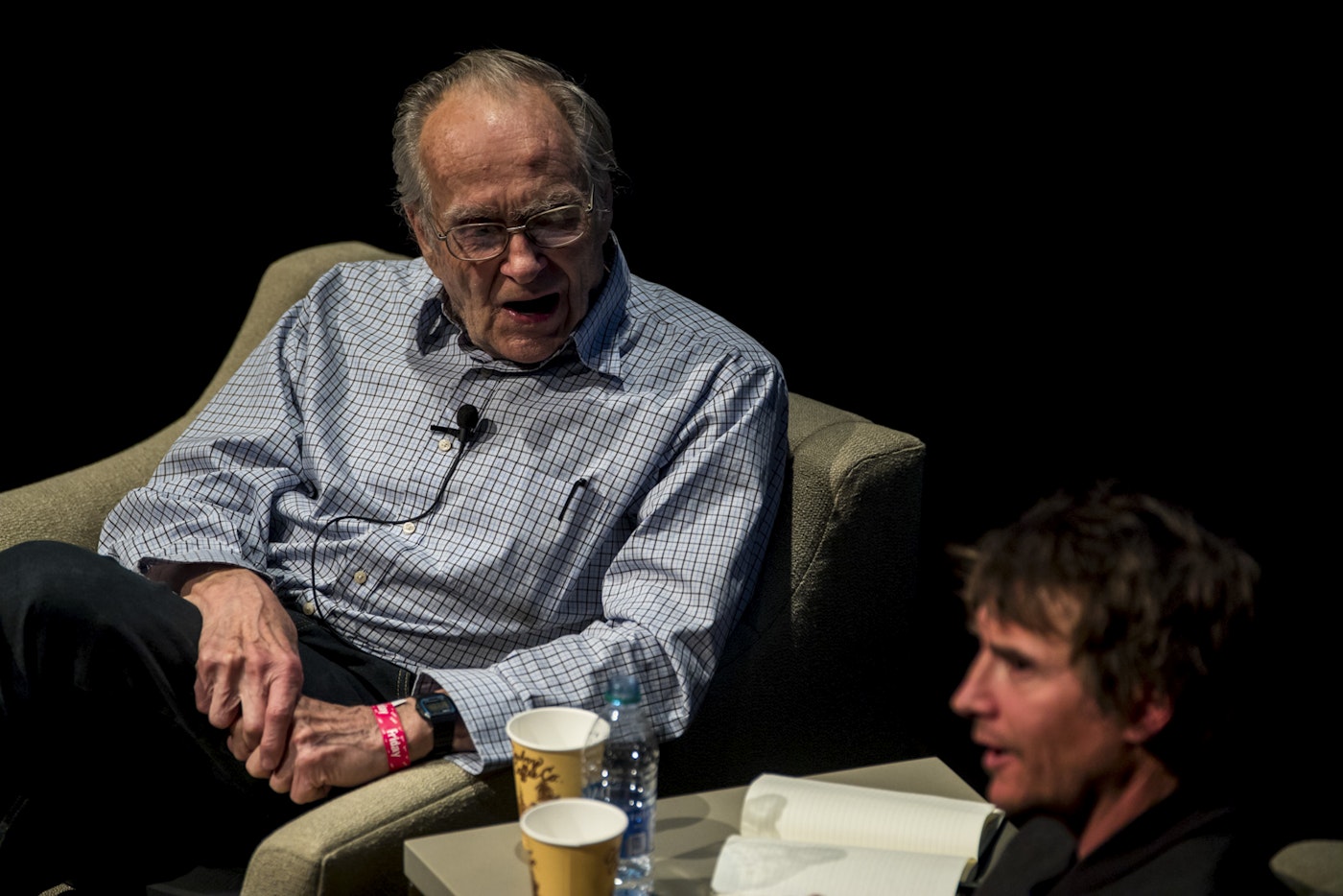
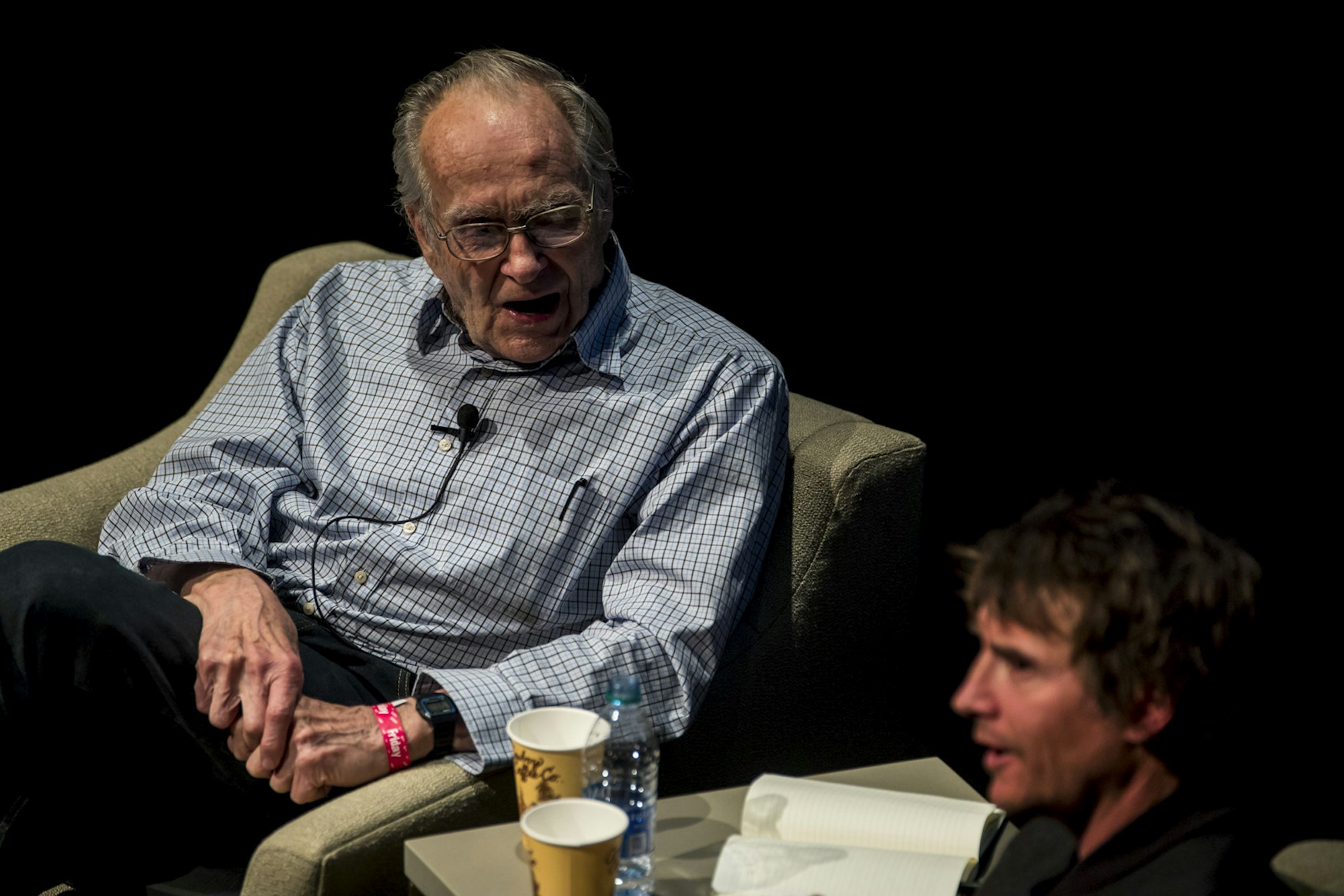
Bill Briggs imparts his wisdom on a full audience in Jackson’s Center for the Arts. PHOTO: Amber Baesler
What sets the Arc’teryx Academy apart from other clinics?
Michelle: It’s kind of like a festival for the mountains. It’s like a backcountry festival bringing people together, teaching through mentorship and experiences. Having the opportunity to come and take some of these courses for a relatively great price is a huge deal. You can come to one place and learn so much about the mountains and how to travel safely in the backcountry. That first-hand experience of going out in the wilderness with someone is invaluable. You can sit in a classroom and learn all that you want but you have to apply that experience, so actually getting into the mountains with these really, really experienced people is so valuable and so helpful to your personal progression.
Hoji: What makes it unique is you have a lot of the Arc’teryx employees—marketing, team management, product development, designers—a good variety of people within the company participating and going skiing, so you get this good mixture of ski guides from here, guides from all over, athletes, people from within the company at many different levels and skiers and snowboarders coming together to be a part of the camp. It’s a really good interaction between this circle of everyone who is involved. I’ve done a lot of other events but it’s not usually as much of the internal company interaction as part of the event.
Do you have a favorite clinic to be a part of?
Hoji: I don’t even know what clinics I’m at usually, I just show up [laughs]. The camps are kind of tough with the titles and that’s what we try to explain to people, because it is condition-dependent. People sign up for freeride events and it’s a stormy day, avalanche conditions are high and there’s a lot of really good powder skiing in the trees. People sign up for what they’re interested in but we really adapt to the conditions that we get, so I’m not too hung up on the actual titles of the clinics. I want mine to be called “Powder Therapy.”
Michelle: So far, I’ve just gone touring in the park around here. We’ve done advanced ski touring. Two days ago we did “Teton Selects” but due to the avalanche conditions, we could only go so far and do only what Mother Nature was allowing us to do on that day. But we dove into the avalanche awareness on that day because it was such a perfect learning day. So that was probably one of my favorite days because there were so many learning examples all around to share with people. But generally, every clinic that I’ve gone to has had amazing people partaking in it and it’s just been really fun to get to learn and have these experiences together.
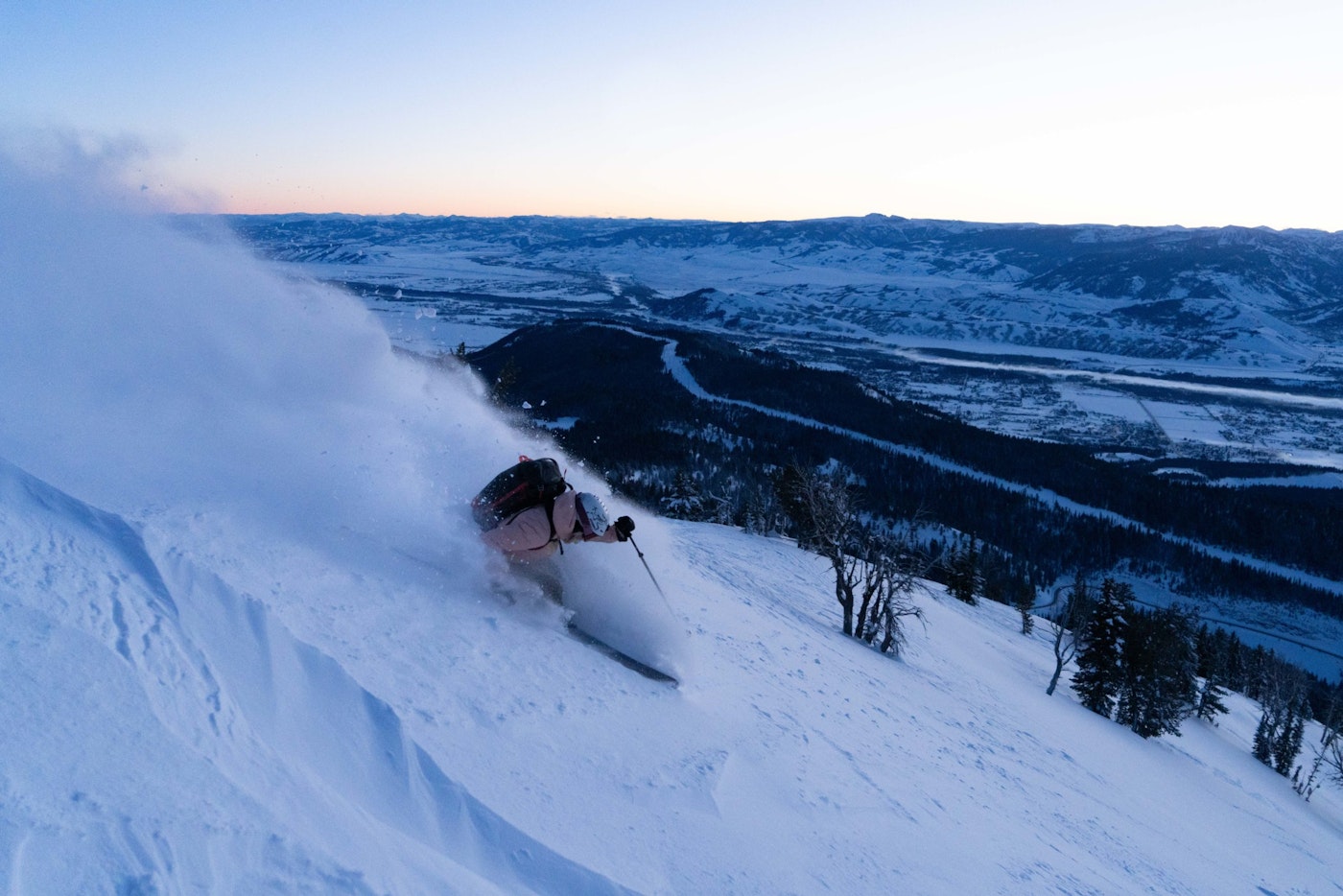
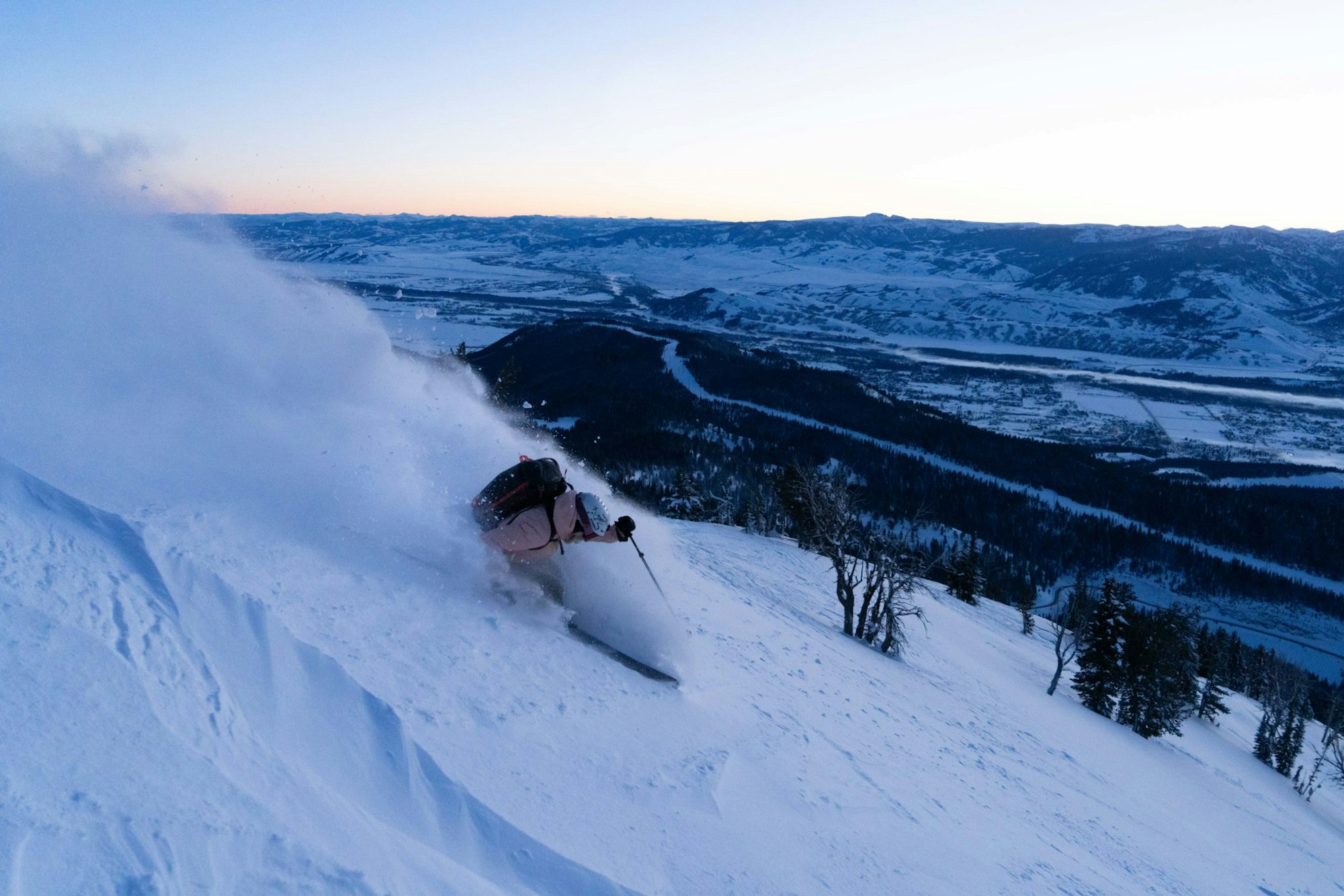
Arc’teryx athlete Lucy Sackbauer cashes in on her uphill trek above the town of Jackson. PHOTO: Leslie Hittmeier
Why is it important that a brand like Arc’teryx connect with its consumers in this way?
Michelle: This is a huge way to give back to our community. I love it when I see brands giving back and that could be through sponsorship of different events but Arc’teryx is kind of taking it a step further in my mind, bringing everyone together, offering these clinics and working with the locals to do so. I don’t know any other brand that puts themselves out there in that way. They do it with climbing in Chamonix, and it’s just a really cool vibe, it’s a really cool thing to be a part of. Building that brand relationship with individuals is really key. For me, as a sponsored athlete, I align myself with brands that I care about, that have the same morals as me, and Arc’teryx, for that reason alone, I feel so aligned with them.
Hoji: It goes back to what makes this [Academy] so unique, the event itself. To have that interaction of people in the company—marketing, developers, designers, team managers, athletes—with professional ski guides and consumers, the public skiers and snowboarders, you kind of close the feedback loop. You have all aspects and I think, ultimately, that makes the company and the people working from whatever aspect, align on the things to work on, things done well, things to improve, things that have been missed. So yeah, I think it kind of completes it all. And everyone has fun together using this stuff, most importantly.
Anything you’d change about the Academy?
Hoji: It’s evolving. It’s the third year and every year it’s changed and grown. I think there’s room for—especially for people who are looking for certain things to learn—it would be cool to offer multiple-day clinics, the same group of people working together because it’s really hard to fit everything into one day. I think that would be cool but it’s all about planning and logistics and as I mentioned, I just show up and go with it, so it’s not my call but I think that could be a good way to improve the Academy.
Michelle: Make it longer? [laughs]. I don’t know if I’d change anything, it’s just a pleasure to be a part of and it’s super fun also, as athletes, to get together with our team. I had a down day yesterday and I got to go out with a designer and the brand manager and we went touring. When you’re in the mountains, sharing a skin track, the beautiful conversations that happen on a skin track are unlike any others. That connection, that building of community, is so important to me.
That kit looks fresh! What Arc’teryx gear are you wearing this year?
Michelle: The Shashka Jacket and the Sentinel Pants. I love this jacket because it has a little bit longer of a cut, which I really like. And then touring, I actually like to wear pants because I get really hot in bibs. So I love this kit, it has everything that I need. It’s simple, but has everything I need.
Hoji: I say I’m the worst marketing athlete because I’m always in stuff that’s either too new or too old to be relevant for marketing purposes [laughs]. But last year I went in and hung out with a few of the designers, Tom Fayle, he’s been there a long time, and he gave me a few samples of stuff for the Proton pants and jacket, which I’m wearing right now. They’re pushing for these breathable insulation layers and I’ve been using them a lot all season. I’ve had to adjust my layering philosophy because it’s different than I’ve done in the past and it’s been working really nicely. Rethinking your layering strategy is kind of neat. I’m a big fan of the Rush LT pants and that’s been a fun combination with the breathable insulated underpant, which kind of seems too much but today when it’s minus 15 [celsius], I’m going to be feeling great.

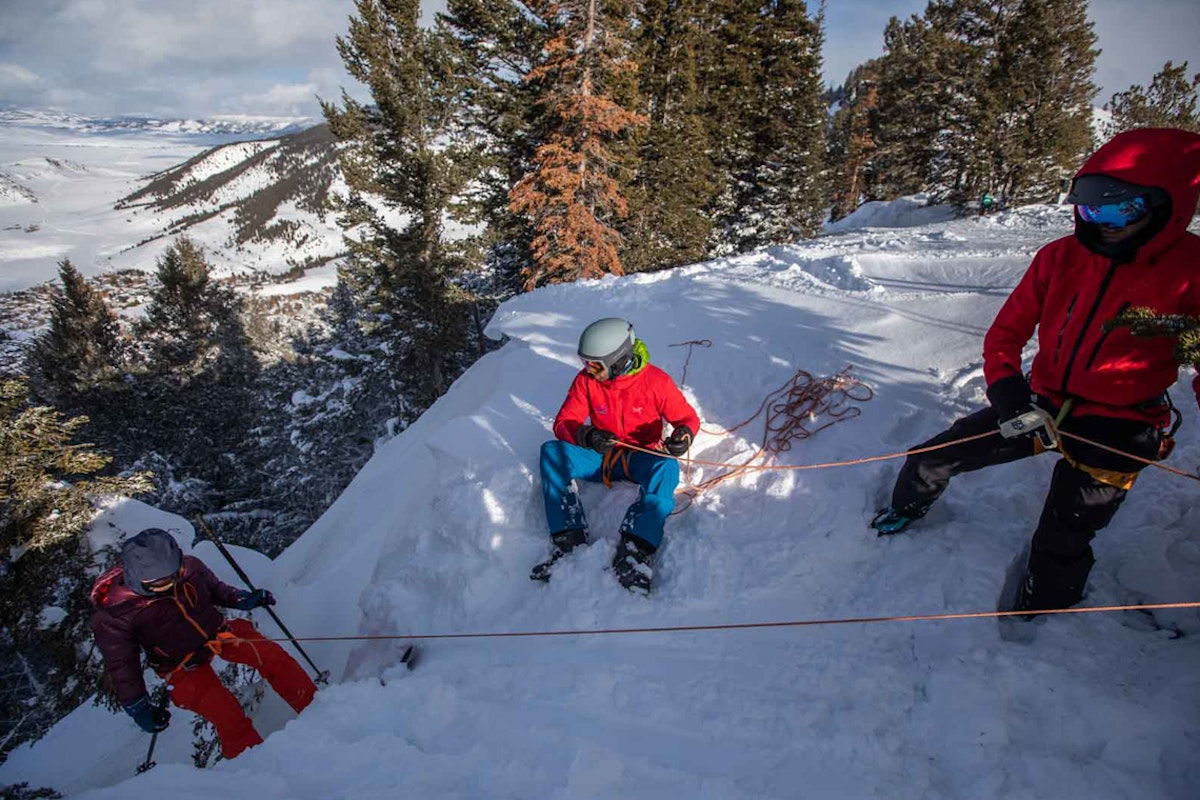

![[GIVEAWAY] Win a Head-to-Toe Ski Setup from IFSA](https://www.datocms-assets.com/163516/1765920344-ifsa.jpg?w=200&h=200&fit=crop)


![[GIVEAWAY] Win a Legendary Ski Trip with Icelantic's Road to the Rocks](https://www.datocms-assets.com/163516/1765233064-r2r26_freeskier_leaderboard1.jpg?auto=format&w=400&h=300&fit=crop&crop=faces,entropy)




![[GIVEAWAY] Win a Head-to-Toe Ski Setup from IFSA](https://www.datocms-assets.com/163516/1765920344-ifsa.jpg?auto=format&w=400&h=300&fit=crop&crop=faces,entropy)


